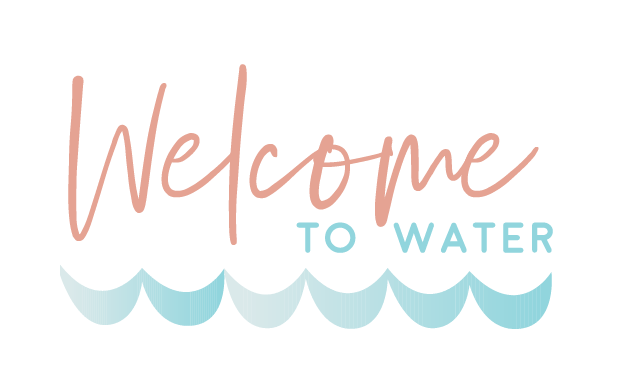
The Welcome to Water marketing team met with swim schoolers Australia AND AROUND THE WORLD AT SWIMCON22, while Directors Peter Dalle Cort and Jessie Jones presented the “Debunking the Dunking” workshop.
Controversy ensued, as delegates were asked to question their attitudes, beliefs and values!
PART 3Let’s get to drowning-zero, using any means necessary.
Delegates at the SCTA SWIMCON22 conference attending the Welcome to Water “Debunking the Dunking” workshop were presented with a hypothetical way to eradicate drowning. Our learn to swim industry built on this premise, that attending swimming lessons will reduce the risk of drowning. Kids who do swimming lessons will become “SAFER”. Although we recognise that we can never “drown proof” a child, what if there was a new technique that could reduce the amount of drownings to zero, or close to it? Would we consider using this new technique?

Delegates were asked to consider using this new technique, based on these assumptions:
1 - There is a drown proofing method that is scientifically proven to work and reduce drowning deaths and injuries. It could potentially save your child’s life.
2 - It also uses lots of force and is traumatic to the child. It has been scientifically proven that this method causes long lasting trauma and negative psychological outcomes for the child.
3 - Science has proved that no other learn to swim method is as effective as this new method.
Delegates were asked if they would consider using this technique at their swim schools if the quoted effectiveness against drowning was a 10% survival rate. No takers…
Well what about a 50% effectiveness? Still no takers…
What if this new technique was 100% effective against drowning?
There was 25 drowning deaths 20/21 aged 0-4. This number could be reduced to 0! We must get to Zero drownings at all costs! By any means necessary! Still, no takers…
Delegates were asked to think about their reasoning behind their choice? Are your current attitudes towards the use of force effecting your attitudes towards this new scientifically proven method? Are your current beliefs preventing you from accepting new ways of thinking? Do your core values allow you to justify or not justify one way or the other? Why, or why not?
Do you think that there is never any justification for the use of force in a swimming lesson? This fundamentalist position may get great results, but does not allow for individualised instruction.
Do you think that there is a little wiggle room for using force?
Some teachers are happy to:
Some teachers are happy to:
-manipulate the arms of their swimmers in large sweeping motions to teach freestyle. (This is something that I myself hated as a young swimmer! Don’t touch me!)
-Pull their leg back whilst they swimming away in order to stop them so they can be given further instruction. (I am guilty here. I saved time in my class, but was it necessary?)
-Take an infant away from their mother to demonstrate a hold. (I love babies, but do babies love me?)
Do you think that any use of force is justified if it is a “protective” use of force. Our laws allow for “reasonable” uses of force. This “reasonable” justification allows drown-proofers to operate unchallenged in most countries.
Or are you fundamentalist towards eradicating drowning? Should we use any means necessary to reach “Drowning-Zero”?
This thought exercise is important because we must be able to verbalise our position. It is not enough to say that “they are wrong and I am right”. It also makes us examine our own practices, in order to identify and reduce the amount of force. In our lessons, and life in general.
“How much trauma does it cause”?
The penny was beginning to drop. One delegate spoke up with the question “How much trauma does it cause”? When he was considering if this hypothetical scientifically proven drown-proofing technique was justifiable to use, he was thinking about balancing the benefits with the negative effects. Finally, someone was brave enough to consider using force.
The goal of the workshop was achieved. Delegates were forced to consider using force in their lessons, and then justify its use. Now their next task was to look at the uses of force in their own lessons, how they justify their use, how they can reduce those uses of force.
Was a little amount of trauma okay? As we have heard drown-proving advocates say before “I would rather hear them cry in a swimming lesson than be silent, drowned on the bottom of a pool.”
The goal of the workshop was achieved. Delegates were forced to consider using force in their lessons, and then justify its use. Now their next task was to look at the uses of force in their own lessons, how they justify their use, how they can reduce those uses of force.
“I used to think that it was okay to have children crying in my classes” - SWIMCON22 delegate.

One great story of how the policies and procedures in a swim school can be modified to reduce the use of force came from one of the conference delegates.
“I used to think that it was okay to have children crying in my classes”, he said. The delegate was speaking in reference to a particular level, the “transition” class. That bridge between the parent with child class, and the “preschool”, without parent, class. Typically this class of for the approximately 3 year old swimmer, who’s emotional readiness doesn’t allow for complete separation from the safety of the parent. Children are deemed “to advanced a swimmer” or “too old” for a parent with child class, or “almost ready” for a preschool class.
Our delegate thought that the best way for these “almost ready" swimmers to become emotional ready, was to separate them from the safety of their parent. This man is an experienced, successful swim school operator, who is otherwise against using force in swimming.
The obvious reaction to this separation is for the child to cry. A normal, expected reaction. So the remedy for this crying was for the child to “cry it out”. Eventually, over the course of weeks, or months, the child would adjust to this new situation, and participate without crying. It seems that the cry it out method works…
The delegate had been doing this for about 17 years, until he went to university to study psychology. Thanks to science, this man was able to identify the behaviours of the child, that these behaviours were expected, but not an acceptable emotional reaction in the forum of swimming lessons, and that he was able construct new techniques to minimise this use of force. The remedy, let the parent sit next to the child on the side of the pool, and slowly, over the course of weeks, reduce the parents input in the lesson. Who would have thought!???
Pete gets triggered by someone spruiking survival back floating!
The post-conference round table discussion saw the remaining delegates and presenters meet to conduct a post-mortem on the events of the week.
During the discussion, one of the delegates began to spruik the benefits of their swim school’s “survival back floating” focused swim program, and how “swimming lessons are not meant to be fun, but to save lives”.
Alarm bells began ringing. Images of You-tube horror-show videos of survival back floating participants, crying and screaming for their lives came racing to my mind.
My beliefs I had constructed around what a survival back floating lesson consisted of, created a negative attitude towards what this person was saying. Now as I said before, beliefs are sometimes not based on fact!
How could I form a negative attitude to what she was saying based on what I “believed” was happening at her swim school? I had know idea what techniques were used, how the lessons were structured, or whether there was an undue use of force.
The phrase “survival back float” was all that I needed to write off her opinions, her swim school, and any valuable, helpful information that she was willing to impart, to help make the swimming industry better. This is exactly what I had been teaching delegates in my workshop! I had fallen victim to the growth-impairing thought patterns I had warned others about!
The first step was for me to recognise these thoughts. Where did I get these beliefs from? How were my current beliefs effecting my attitude to her?
The next was to open my mind to what she was saying. Was there merit to a survival back float based program? Yes! Would I consider doing a survival back floating program at my swim school? No. But I would definitely consider incorporating more survival back floating skills in my current program? Yes.
But as one delegate pointed out, it is HOW the lesson is delivered that counts. The heavily safety focused lesson, based upon a fear of the child drowning, opens the door to the devil. Our protective nature and good intentions allowing us to inflict trauma, all in the name of safety.
The, “swimming lessons are not meant to be fun, but to save lives” style of lesson doesn’t fit in with the Welcome to Water goals of:
The, “swimming lessons are not meant to be fun, but to save lives” style of lesson doesn’t fit in with the Welcome to Water goals of:
Water awareness
Breath Control
Floatation
Movement
Safety
Independence
And most importantly…
ENJOYMENT!
ENJOYMENT!

If there is no enjoyment, then we should look at what we are doing in the lesson, balance it against the benefit to the child, and modify the activity. If the child is uncomfortable, there is a good chance that our fears are propelling us to use force.
Conclusion
The reason that international events such as the SWIMCON22 exist is to challenge your thinking. Criticise yourself, as well as others. Open yourself to the possibility that what you have been doing at your swim school for years, may not have the best outcomes for the physical, social, cognitive and emotional development, and safety of your students. Especially if you are on the “no force” side of the fence, as I am. Only then will we have the capacity to change, and as an industry, reduce the use of force in learn to swim lessons.

© Welcome to Water
Subscribe to our newsletter now!
Get weekly updates on live streams, news and more right in your mailbox.
Thank you!

